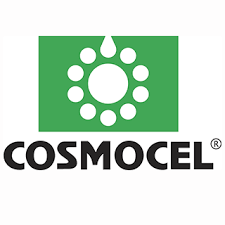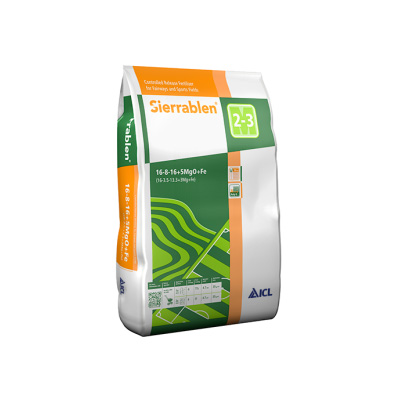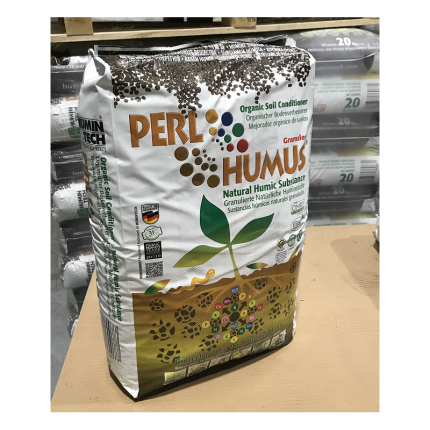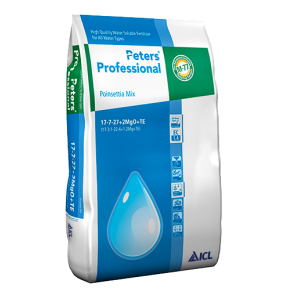Grow More Liquid Humic Acid (12%)
Compared to Other Organic Products, Leonardite is Very Rich in Humic Acids and Very Bioactive Through It’s Molecular Structure.
The biological activity of Leonardite is about four times stronger than other humic matter. Compared to other organic matter, Grow More humic acids offer long term effectiveness that does not dissipate as quickly as animal manure, compost or peat. Because humic acid is already decomposed, it does not compete with plants for nitrogen as does incompletely decomposed compost. Furthermore compost and light peat are rather rapidly decomposed by soil microbes and mineralized with very little humus formation. Grow More humic acids provide improved soil structure for years, in particular our granular humic up to 10 years.
Benefits of Humic Acids
University and agricultural industry studies have proven the value of using humic acids in soils low in organic carbon matter. Silt, sand, loam or silt clay soils show the most improvement.
Physical: Humic acids physical modify the structure of the soil.
Very small clay particles called Floccules, along with charged organic humic acids form bridges that bind to each other and to fine silt particles creating much of the long term stability for the small micro aggregates in soils.
Soil water retention is improved, when organic matter increases, both the infiltration rate and water holding capacity is enhanced. The water holding capacity of humus on a mass basis (not volume) is four to five times that of silicate clay soils.
Makes soil more friable or crumbly by forming complex humus molecules thus increasing aeration of soil, and improving soil workability.
1. Darker soil, greater absorption of solar energy, warmer soil on average. Stimulates microbial flocculation of soil.
2. Chemical: Humic Acids chemically change the fixation properties of the soil.
3. Buffers and helps neutralize both acid and alkaline soils by charged colloidal particles, referred to as micelles (micro-cells) which give rise to a phenomena known as the ionic double layer. Helps improve cation – anion exchanges.
4. In acid soils humic organic complexes alleviate aluminum toxicity by binding the aluminum ions in non toxic complexes.
5. Improves uptake of nutrients and water by plants.
6. Attack soil minerals and accelerate their decomposition, thereby releasing essential nutrients as exchangeable cations.
7. Possesses high cation-exchange value, humic acids form organic soil colloids, that are surrounded by a swarm of cations Ca2+, H+, Mg2+, K+ etc. The colloids are actually convoluted chains of carbon bonded hydrogen, oxygen and nitrogen. The negative charges of humus are created by dissociated phenolic groups – OH, Carboxyl Groups – COOH and phenolic groups – OH.
8. Absorbed cations attract water molecules, which play a critical role in determining both the physical and chemical properties of soils.
9. In humid regions colloids typically are composed of Ca2+, Al3+, H+, Na+, NH4+, Mn+. In arid regions colloids are typically Ca2+, Mg2+, K+, Na+, NH4+, Mn+.
A natural chelator for metal ions, promotes uptake of metal ions by roots. Humic acids and fulvic acids contain carboxyl and phenol groups that chelate or bind cation (Fe3+, Cu2+, Zn2+, Mn2+ etc.) into stable organo-mineral complexes. Some of these metals are made more available to plants, because they are kept in soluble chelated form. Soil humus colloids are a focal point for cation exchange reactions, which have profound effects on soil and plant growth.
The Grow More Advantage:
Our rich source of readily available humic acid is in many respects identical with soil humus, having essentially the same source – residual organic matter from decomposed plants, practically identical in chemical and physical properties and indistinguishable by spectroscopic examination.
Soil organic matter (carbon) is normally regenerated by long-term process. In contrast Grow More humic acid is in a concentrated form, easily applied by conventional methods, can be incorporated into the soil and is readily available to function as soil organic matter without delay to provide higher cationic exchange capacity, increased levels of active organic matter (carbon), higher biomass nitrogen levels (due to higher microbes levels) – minimized nutrient leaching and increased Nitrogen mineralization – the Grow More advantage – more efficient nutrient cycling.

























Reviews
There are no reviews yet.